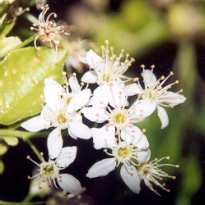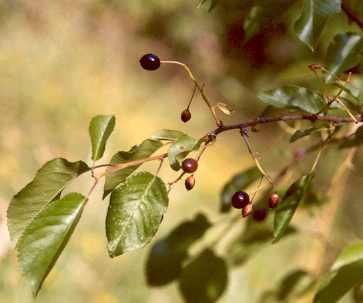
Introduction
The tortilla is a flatbread made from corn or wheat. The word "tortilla" originally comes from the Spanish word torta, which means "round cake". When Spanish explorers discovered an unleavened flatbread made by the Aztecs, they called it tortilla (little torta).
Tortillas have been used for many centuries in Mexico, where they are consumed year round. More recently other countries have begun producing them to serve the Mexican market and the growing demand for Mexican food, particularly in North America, Europe and Eastern Asia. Tortillas are most commonly prepared with meat to make dishes such as tacos, burritos, and enchiladas, however, there are many alternate versions without meat.
The corn tortilla (tortilla de maíz), made from specially treated maize flour, have been a staple food of the Mexican region since pre-Columbian times; these are also now commonly made from wheat flour (tortilla de harina or tortilla de trigo).
Normally the corn is subjected to the nixtamalization process. Nixtamalization typically refers to a process for the preparation of maize (corn), or other grain, in which the grain is soaked and cooked in an alkaline solution, usually limewater (= saturated solution of calcium hydroxide made by dissolving 1,5 g of Ca(OH)2 in one liter of water), and hulled. The term can also refer to the removal via an alkali process of the pericarp from other grains such as sorghum.
This corn has several benefits over unprocessed grain for food preparation: it is more easily ground; its nutritional value is increased; flavour and aroma are improved; and mycotoxins are reduced. These benefits make nixtamalization a crucial preliminary step for further processing of maize into food products, and the process is employed using both traditional and industrial methods, in the production of tortillas, tamales, corn chips, hominy and many other items.
The two versions of the Mexican tortilla have different textures owing to the grains from which they originate: the maize version is somewhat thicker and heartier in texture, while the wheat version is less easily broken, due to its elevated gluten content, and therefore often larger in circumference.
Recipes & ingredients
There are many kinds of fillings for the tortilla. The tortilla itself however has a rather traditional recipe. I'm giving here two different recipes: one for a traditional wheat flour tortilla and one for a no-fat tortilla
ingredient
|
traditional
|
low fat
|
| wheat flour |
100,0
|
100,0
|
| water |
53,0
|
55,0
|
| shortening |
10,0
|
-
|
| salt |
1,7
|
1,7
|
| sugar |
0,8
|
-
|
| baking powder |
2,7
|
2,7
|
| glycerin |
-
|
3,7
|
| modified starch |
-
|
7,5
|
Weak flours with low gluten content give tortillas of inferior quality with unsatisfactory tearing quality. The tortillas will easily crack and split after overnight storage. Strong flours on the other hand require extended mixing and resting times before moulding. For hot-press tortillas the flour should have a protein content betzeen 9,5 and 11,5 %
Fat improves machinability by reducing dough stickiness. High shortening doughs are less esastic and more extensible and therefore easier to press. High levels of shortening are also essential to prevent the tortillas from loosing their ability to be folded without cracking.
Emulsifiers with good dough stabilising effects, such as SSL are used to improve dough machinability and tortilla texture. Emulsifiers with good starch complexing properties, such as distilled mono- and diglycerides are added to prevent the tortillas from sticking together in the package.
Preservatives are generally added to extend mould-free shelf life. It is importatnt to control the final pH of the torilla since preservatives like propionates and sorbates lose their effectivesness above pH 6,0 - 6,5. Since sorbates are more effective than propionates from pH 5,5 to pH 6,5, it is advised to use sorbates instead of propionates in this pH range. When using baking powder it is best to use sodium propionate instead of calcium propionate becasue calcium can interfere with the baking powder salts.
Baking powders based on sodium bicarbonate and appropriate amounts of leavening acids like monocalcium phosphate, sodium aluminium phosphate or sodium aluminium sulphate are generally used at levels between 1 and 3 percent. Baking powders affect the puffing of tortillas during baking and als influence the pH of the tortilla. A high pH improves dough consistency and tortilla quality but a low pH is required for extending the mould free shelf life of the tortillas. Although some tortilla formulations use yeast instead of baking powder for leavening, the primary reason for adding yeast is to improve the taste and the flavour of the tortilla.
Reducing agents are used to improve dough machinability and to reduce resting times by increasing dough extensibility and reducing dough elasticity. This is achieved by adding cimpounds that break or block disulfide bonds in the gluten protein. These include l-cysteine, glutathione (present in non-active yeast), sorbic acid and sodium bisulfite.
Other ingredients such as salt (1 - 2 % on flour wieght) and fat replacers which help to keep low fat tortillas soft and prevent them from becoming brittle and developing cracks when folding. These fat replacers can be based on fibers, starches and gums. They help to increase the water absorption and prevent excessive moisture loss during baking.
 |  |
Production method
As any other bakery process, the production of tortillas follows the normal trditional steps:
- mxing
- dividing
- rounding
- intermediate rest
- moulding (hot pressing)
- baking
- cooling
- pacakging
Mixing the ingredietns into a smooth dough of the right consistency requires water absorption to be around 750 farinograph units. Lower water absorptions will give a stiffer dough which will be more difficult to press. The tortillas will be of inferior quality. Higher water levels result in tortillas with a more desirable silky and soft texture with many layers but may cause machinability problems. Undermixed doughs give tortillas with smaller blisters, whereas overmixing causes machinability problems due to sticky doughs. Normal dough temperatures for hot press wheat flour tortillas are 32 - 35°C. Lower dough temperatures increase water absorption (i.e. one can make a less sticky dough) and yield softer tortillas but also slow down dough relaxation and increase resting time.
Dough dividing, rounding and resting take place immediately after mixing. Scaling weights normally vary from 30 to 50 g, depending on the desired diameter of the tortilla. The dough pieces are usually transferred to an overhead proofer for a short resting period where they become less elastic and more extensible. A proper relaxation of the gluten protein in the dough pieces facilitates pressing while improper relaxation results in irregular shaped tortillas with translucent areas and less puffing.
Pressing takes place by transferring the relaxed dough pieces onto a heated conveyer that moves them under a hydraulic press that operates at 175 - 230°C with 1,75 up to 7,5 kg/cm2 of pressure. During pressing, a thin skin is formed on the surface of the raw tortialla that seals it to limit the release of steam during baking. This causes the tortilla to puff and expand into a ballon shape during the subsequent baking.
Baking takes place in a three level tortilla oven. The tortillas are baked for approximately 40 seconds at temperatures of 190 - 250°C. The tortillas start at the top level of the oevenm then are flipped over to the middle oven level and then are flipped again onto the lower conveyer fefore they leave the oven.
Cooling is reauired to keep the tortillas from sticking together in the package. Proper cooling limnits the loss of moisture from the baked tortillas. Packing the tortillas in plastic bags limits further moisture loss. Since tortillas are practically sterile as they come out of the oven, avoiding contamination during cooling and packaging is important for controlling their mould free shelf life.










 وانتقل الشغل من المطبخ للبرندة ويا عيني على الحالة
وانتقل الشغل من المطبخ للبرندة ويا عيني على الحالة









 [Bird Cherry; Mahlab, Mahleb (Mid East, Anatolia, Armenia); Mahlepi (Greek); St Lucie Cherry, Mahaleb Cherry, Prunus mahaleb]
[Bird Cherry; Mahlab, Mahleb (Mid East, Anatolia, Armenia); Mahlepi (Greek); St Lucie Cherry, Mahaleb Cherry, Prunus mahaleb] The photo to the left shows ripe mahaleb cherries on the tree. Photo by Ras
The photo to the left shows ripe mahaleb cherries on the tree. Photo by Ras










